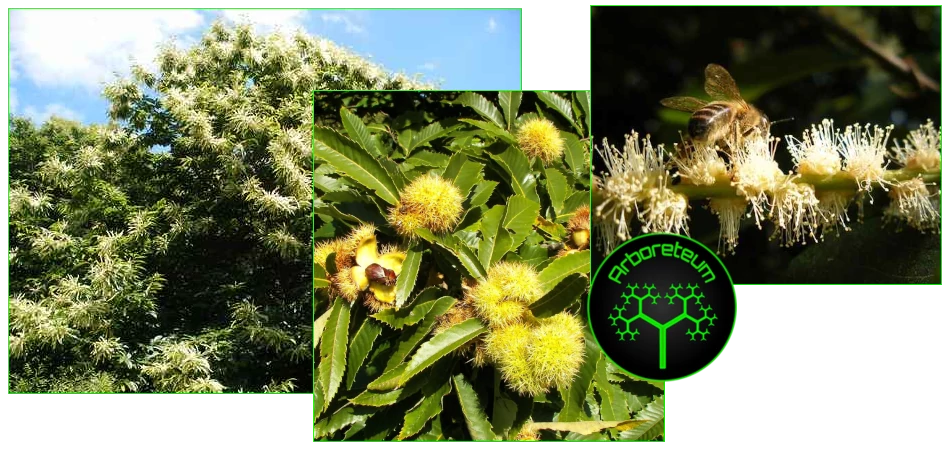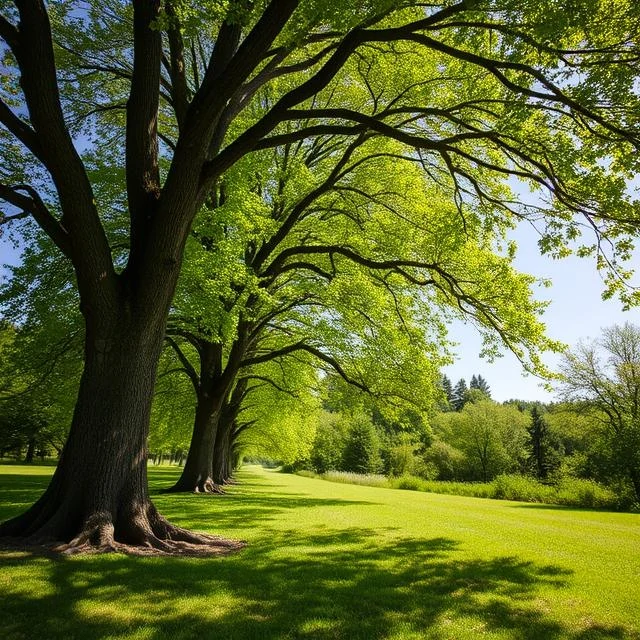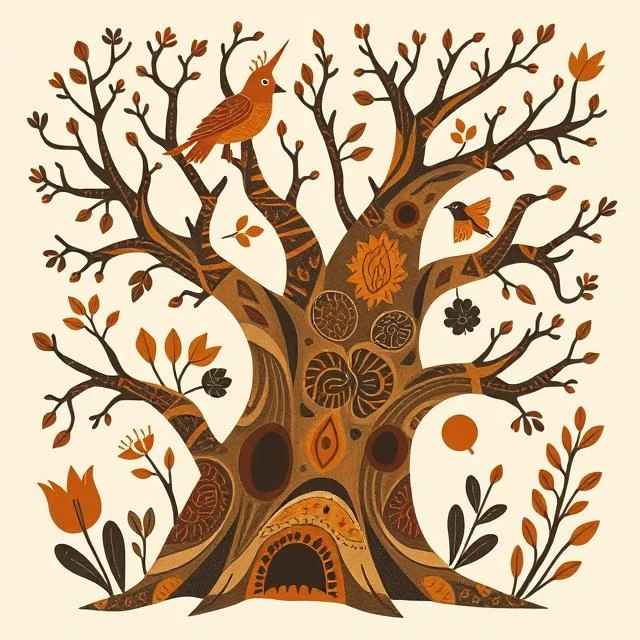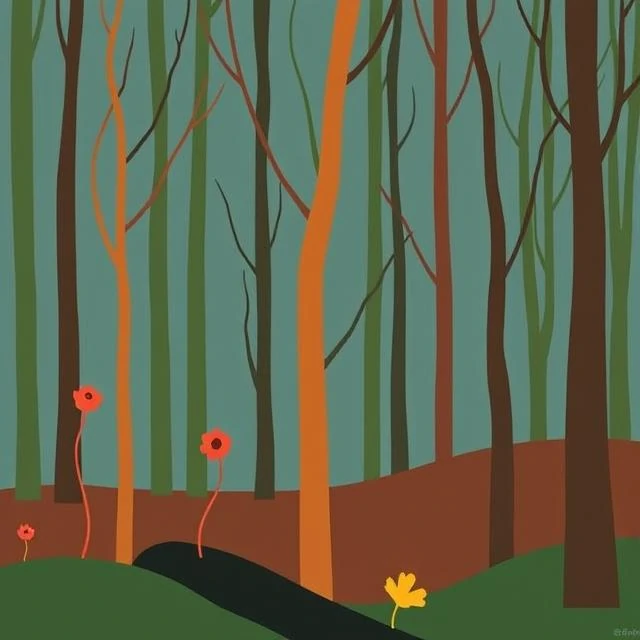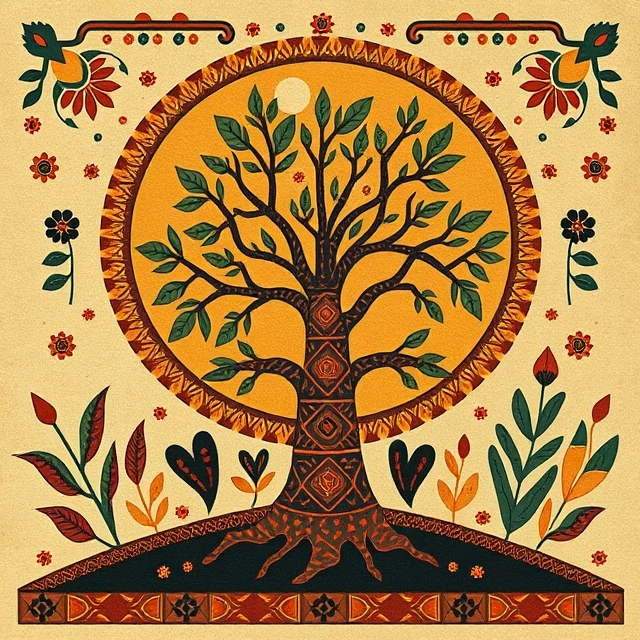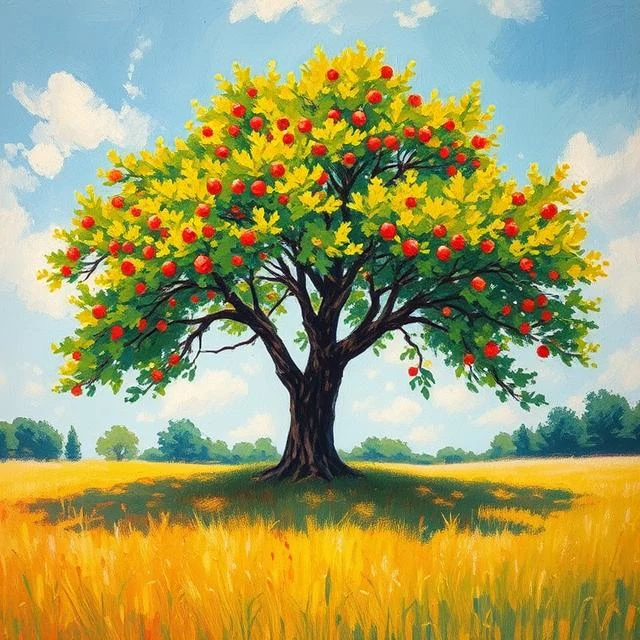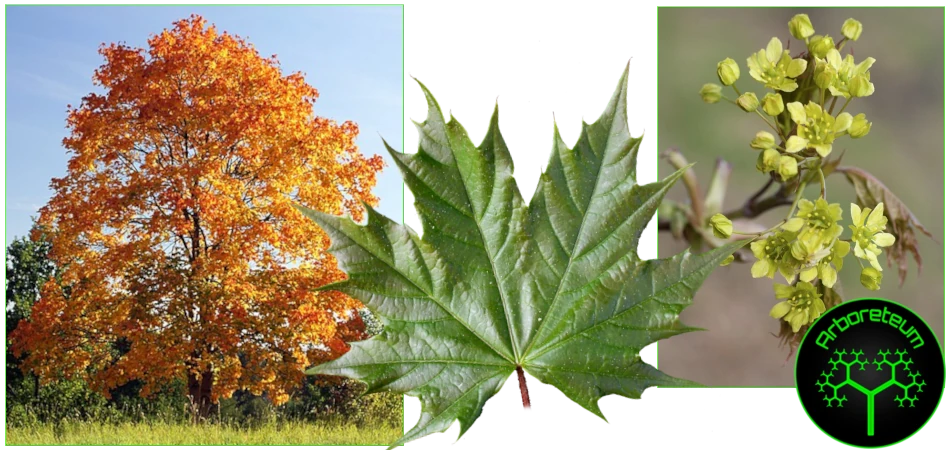In Western Europe, several tree species are particularly at risk due to factors such as climate change, disease, invasive pests and habitat loss. Increased disease and pests can be linked to the increasing temperature caused by climate change. The aim of Arboreteum is to help preserve endangered species by incorporating them into newly planted diverse woodlands.
Here are some tress currently under threat in Europe. The list is not complete. If you have any comments or questions contact us.
Arolla Pine (Pinus cembra)
Pinus cembra, commonly known as the "Swiss Pine" or "Arolla Pine", is a species of pine tree native to the Alps and Carpathian Mountains in Central Europe. It is characterized by its slender, conical shape, bluish-green needles arranged in pairs, and small, woody cones. The Arolla Pine typically grows at high altitudes, often between 1,200 and 2,500 meters (4,000 to 8,200 feet), and is well-adapted to cold, mountainous environments. It is valued for its durable timber, ornamental appearance, and its role in mountain ecosystems.
Arolla Pine is rare outside its specific habitat. Yet even here it is increasingly vulnerable to climate change and logging pressures.

Ash (Fraxinus excelsior)
Fraxinus excelsior, commonly known as the "European ash", is a species of tree in the olive family (Oleaceae). It is native to Europe and parts of western Asia. The European ash is a deciduous tree that can grow up to 40 meters (approximately 130 feet) tall and is known for its distinctive compound leaves, which typically have 5 to 13 leaflets.
The tree produces small greenish flowers in spring followed by the production of samaras (winged seeds) that disperse in the wind. European ash is valued for its strong, elastic wood, which is often used in furniture making, sports equipment, and tools.
An invasive fungal disease (Hymenoscyphus fraxineus) also known as ash dieback has devastated ash populations across Europe. The disease has caused a significant decline in both young and mature trees, and it’s a major concern in countries like the UK, France, and Germany. The European ash has also faced significant threats from the invasive emerald ash borer (Agrilus planipennis).
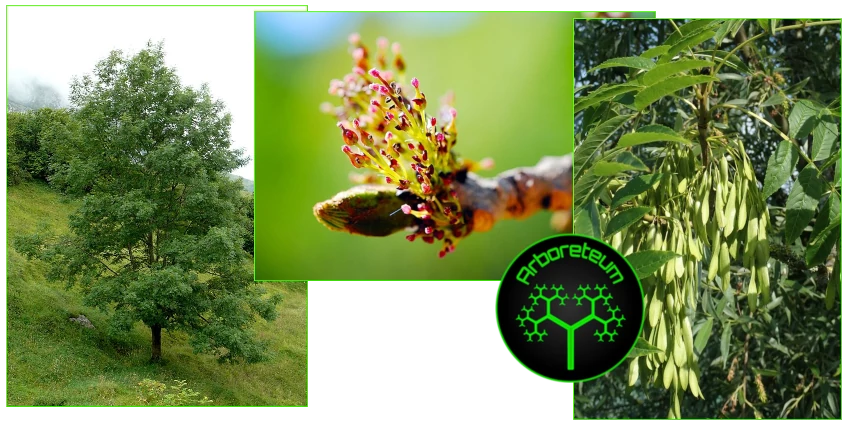
Black Poplar (Populus nigra)
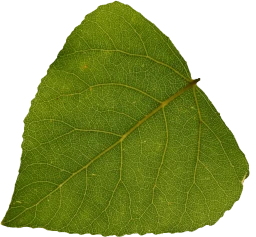
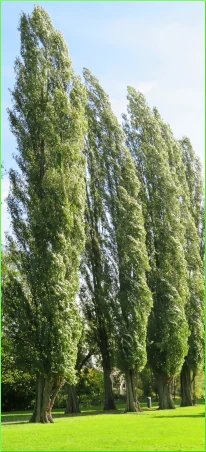 Populus nigra, commonly known as the "black poplar", is a deciduous tree species belonging to the Salicaceae family. Native to parts of Europe, Asia, and North Africa, it typically grows in riparian zones or along riverbanks and in wetland areas.
Populus nigra, commonly known as the "black poplar", is a deciduous tree species belonging to the Salicaceae family. Native to parts of Europe, Asia, and North Africa, it typically grows in riparian zones or along riverbanks and in wetland areas.
The Black Popular can reach heights of up to 30-40 meters (98-131 feet). It is a tall, narrow tree that grows quickly. The leaves are typically triangular to diamond-shaped, with a glossy green upper surface and a paler, hairy underside. The bark is dark gray to blackish and becomes furrowed as the tree matures.
The black poplar is dioecious: male and female flowers grow on separate trees. The flowers are catkins that appear in early spring before the leaves.
Populus nigra is important in its ecosystem as it provides habitat and food for various species. The trees rapid growth, ability to stabilize soil and tolerance of water makes it useful in landscaping, flood control and erosion control.
Black Poplar wood is lightweight and used in furniture, plywood, and paper production.
Once widespread along riverbanks and floodplains, the black poplar has become rare in many parts of Europe due to habitat destruction and hybridization with non-native species.
Cedar of Lebanon (Cedrus libani)
Cedrus libani, commonly known as the "Lebanon cedar", is a species of cedar tree native to the mountains of the Eastern Mediterranean, particularly in Lebanon, Turkey, and Syria. It is a large evergreen conifer that can grow up to 40 meters (about 130 feet) tall, characterized by its wide, spreading branches and thick, aromatic wood.
The Lebanon cedar has been a symbol of strength and resilience for centuries, featured prominently in ancient texts, including the Bible. The wood was historically used in shipbuilding, construction, and for creating artifacts due to its durability and resistance. The tree provides habitat and food for various wildlife species and plays a role in the ecosystem of the mountainous regions where it grows.
Cedrus libani is listed as vulnerable due to habitat loss and deforestation, prompting conservation efforts to protect the remaining populations. It is also threatened by over-exploitation and invasive species that damage its roots and overall health.
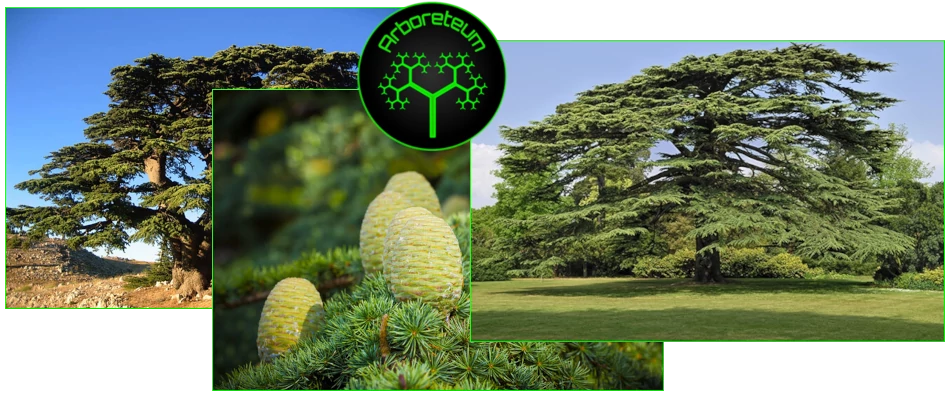
Cornelian Cherry (Cornus mas)
Cornus mas is a species of flowering plant in the dogwood family, Cornaceae. It is commonly known as "Cornelian cherry" or "European cornel". It's a large deciduous shrub or small tree, native to Southern Europe and Southwestern Asia.
The Cornelian Cherry is known for its early blooming, bright yellow flowers that appear in late winter or early spring before the leaves emerge. These flowers are small and held in clusters. The leaves are oval-shaped and turn reddish-purple in the fall. The tree produces edible, bright red, oval-shaped fruits that resemble small cherries. These fruits are tart when ripe and are often used in jams, jellies, sauces, and drinks.
The trees bark is reddish-brown and exfoliating (peeling). The wood is very hard and dense and has been historically used for tool handles and other small items.
Cornelian Cherry is currently a popular ornamental plant in gardens and parks for its early flowers, attractive foliage, and colorful fruit. However it can be difficult to find in the wild as it has been heavily affected by habitat loss and fragmentation.
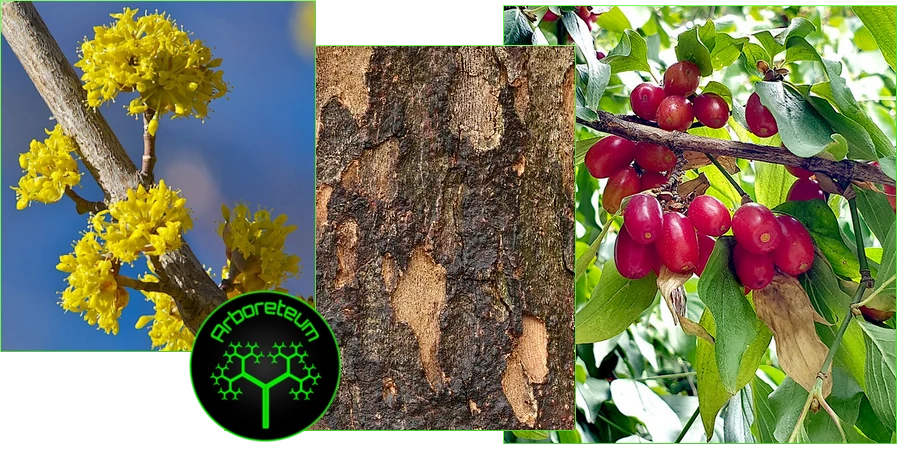
European Beech (Fagus sylvatica)
Fagus sylvatica, commonly known as the "European beech", is a species of tree in the family Fagaceae. It is native to Europe and is known for its smooth, gray bark and dense canopy of leaves, which turn a beautiful golden-brown in the autumn. European beech trees can grow to be quite large, reaching heights of 30 to 40 meters (about 100 to 130 feet) and can live for several centuries.
The leaves of Fagus sylvatica are glossy and ovate, typically measuring between 5 to 10 centimeters in length. The tree produces small, edible nuts called beechnuts, which are an important food source for various wildlife species. The wood of the European beech is valued for its strength, durability, and versatility, making it popular for furniture, flooring, and other applications.
Fagus sylvatica prefers well-drained, fertile soils and thrives in temperate climates. It is often found in mixed forests alongside other tree species, and its presence in the landscape is associated with rich biodiversity.
Beech trees are under pressure from climate change as they do not like hot and dry conditions. They are also vulnerable to fungal infections and bark disease, both exacerbated by warmer climates.
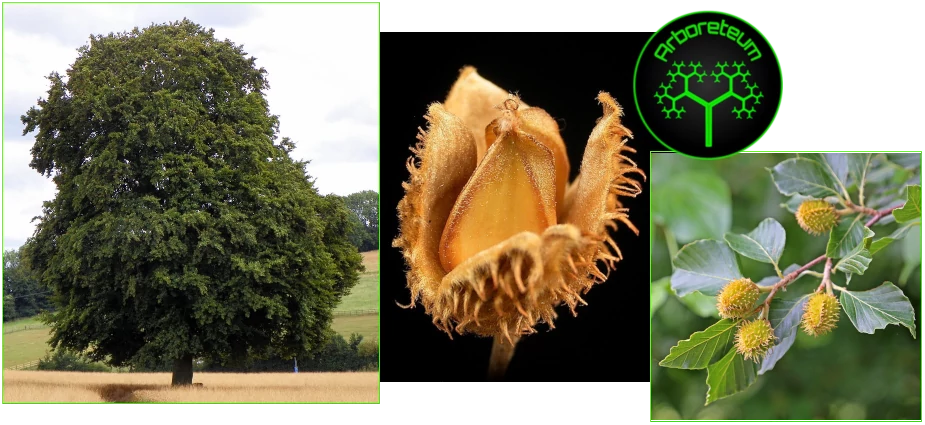
European Larch (Larix decidua)
Larix decidua, commonly known as the "European larch", is a species of larch tree native to the mountain ranges of Central Europe, particularly the Alps and the Carpathians. It belongs to the family Pinaceae and is characterized as a deciduous conifer, meaning that it loses its needles in the autumn, unlike most conifers which are evergreen.
The needles of the European larch are soft, light green, and typically grow in clusters of 20 to 40. They turn yellow and fall off in the fall. European Larch pine cones are small, cylindrical, and grow upright, maturing in one season. They are usually around 3-6 cm long. European larch can grow to be 20 to 40 meters tall, with a conical crown in younger trees that becomes more irregular with age. The bark is smooth and grayish-brown in young trees, becoming scaly and darker as the tree ages.
European larch typically grows in well-drained soils and is often found in mountainous regions. It is adapted to cold climates and can thrive in relatively poor soil conditions. It plays an important ecological role in its native habitats, providing habitat for various wildlife and contributing to mountain ecosystems.
The wood of Larix decidua is valued for its durability and resistance to decay, making it useful for construction, furniture, and other wood products. While European larch is widely cultivated in Europe, it has also been introduced to other regions, including parts of North America and Asia, where it is valued for its timber and ornamental qualities.
Larch trees face threats from diseases like larch canker and the spread of pests such as the larch sawfly. Additionally, they are impacted by warmer and drier conditions that are associated with climate change.
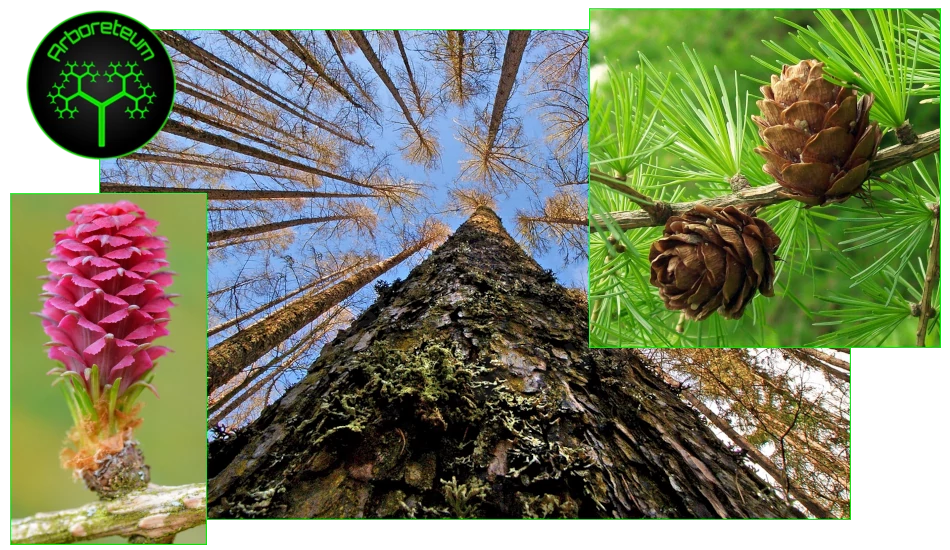
European Yew (Taxus baccata)
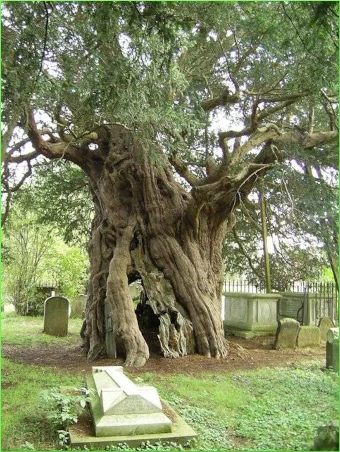 Taxus baccata, commonly known as the "European Yew" or simply "Yew", is a species of coniferous tree native to western, central, and southern Europe, northwest Africa, northern Iran and southwest Asia.
Taxus baccata, commonly known as the "European Yew" or simply "Yew", is a species of coniferous tree native to western, central, and southern Europe, northwest Africa, northern Iran and southwest Asia.
Yew is a medium-sized evergreen tree, typically growing to a height of 10-20 meters, though older specimens can be significantly taller and have a wider, more irregular shape. It has a reddish-brown, scaly bark and dense, dark green, needle-like leaves. Unlike most conifers that produce cones, the yew produces a fleshy, red fruit called an "aril". This aril surrounds a single seed. The aril is the only part of the yew that is not highly toxic. Yew trees are highly poisonous due to the presence of toxic alkaloids called taxanes. Ingestion of the leaves, bark, or seeds can be fatal to humans and animals. While highly toxic, parts of the yew have been used in traditional medicine for various ailments, although this is extremely dangerous and not recommended.
Yews are renowned for their extreme longevity. Some specimens in the UK and Europe are estimated to be thousands of years old, making them among the oldest living trees in the world. They have a rich history and are often associated with churchyards and ancient sites. Yews often symbolize death, resurrection, and eternity due to their longevity and association with cemeteries.
Yew wood is very durable and strong, traditionally used for making longbows (famously the English longbow), furniture, and carvings.
This ancient tree is commonly associated with churchyards and woodlands, but its numbers have dwindled in many areas due to over-exploitation, habitat loss, and diseases.
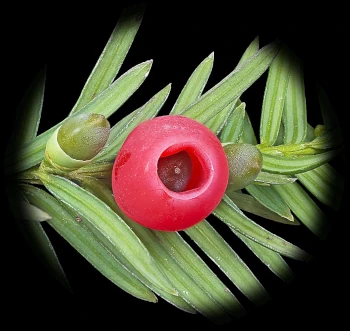
Holly (Ilex aquifolium)
Ilex aquifolium, commonly known as "European holly" or "Christmas holly", is a species of holly native to Europe, Asia, and North Africa. It is part of the Aquifoliaceae family. The plant is characterized by its glossy, dark green leaves, which are often spiny-edged, and its bright red berries, which appear in the winter months. These berries are a significant feature of the plant and are often used in holiday decorations. However, it's important to note that the berries are toxic if ingested in large quantities.
Holly is an evergreen shrub or small tree that can grow up to 10-15 meters tall. It is dioecious, meaning that male and female flowers are borne on separate plants; only female plants produce the distinctive berries when pollinated by male plants.
Holly trees face pressures from climate change. Warmer winters and longer growing seasons increase susceptibility to pests and pathogens, particularly the holly leaf miner disease.
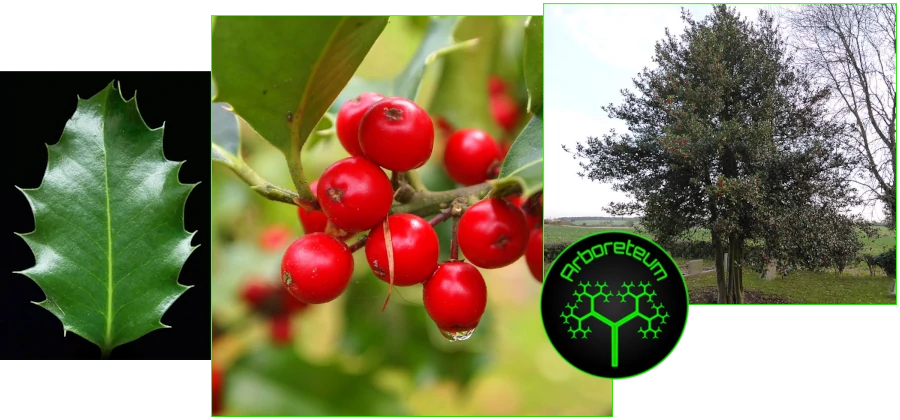
Lime Trees (Tilia)
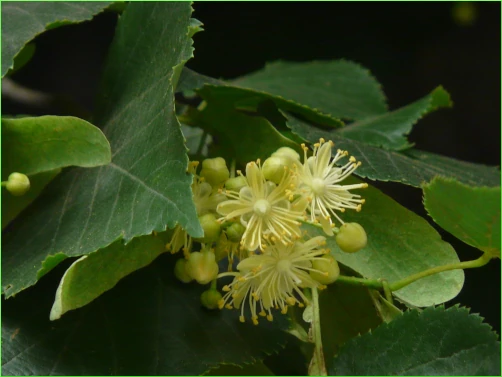 Tilia refers to a genus of flowering trees commonly known as "linden" or "lime trees". These trees are part of the family Malvaceae and are native to the Northern Hemisphere. There are several species within this genus, including Tilia americana (American linden or basswood), Tilia cordata (littleleaf linden), and Tilia platyphyllos (broadleaf linden), among others.
Tilia refers to a genus of flowering trees commonly known as "linden" or "lime trees". These trees are part of the family Malvaceae and are native to the Northern Hemisphere. There are several species within this genus, including Tilia americana (American linden or basswood), Tilia cordata (littleleaf linden), and Tilia platyphyllos (broadleaf linden), among others.
Linden trees are known for their heart-shaped leaves, fragrant flowers, and dense, broad canopies. They are often used in landscaping and urban forestry due to their shade provision and attractive appearance. The flowers of linden trees are also valued for their honey production and medicinal uses, particularly in herbal remedies for soothing coughs and promoting relaxation.
In some regions, particularly in Europe, linden trees hold cultural significance and are often associated with traditional folklore and community gatherings.
While some species of lime trees, such as the common lime (Tilia x europaea), are widespread, others like the small-leaved lime (Tilia cordata) and large-leaved lime (Tilia platyphyllos) are rarer.
Lime trees may be susceptible to fungal disease which can cause root rot and bleeding cankers. Otherwise the trees can also suffer infestations of aphids, sap-sucking insects and gall mites. Tilia cordata is particularly sensible to dry periods or drought.
Norway Maple (Acer platanoides)
Acer platanoides, commonly known as the "Norway Maple", is a species of maple tree native to eastern and central Europe and western Asia.
It's a medium-sized to large deciduous tree, typically growing 20-30 meters (66-98 feet) tall. It has a dense, rounded crown and distinctive palmately lobed leaves with 5 to 7 sharp points. These leaves are bright green in summer and often turn vibrant shades of yellow or red in the autumn, although some cultivars have purple or maroon leaves.
The Norway Maple produces small, yellow-green flowers in clusters in early spring before the leaves emerge. These are a good early source of nectar for pollinators. The fruit is a samara (a winged seed), often called a "helicopter" or "whirlybird," which is dispersed by wind.
It's a hardy and adaptable tree that can grow in a variety of soil conditions and climates. It's often planted as an ornamental tree in urban areas, parks, and gardens due to its attractive foliage, shade, and tolerance for urban conditions.
While native populations of Norway Maple are dwindling the tree is considered invasive in other regions where the tree has been introduced (noteably North America where the tree outcompetes native trees and plants due to its dense canopy, rapid growth, and prolific seed production).
Norway Spruce (Picea abies)
Picea abies, commonly known as the "Norway spruce", is a species of spruce tree native to Northern, Central, and Eastern Europe. It is a coniferous evergreen tree belonging to the family Pinaceae. The Norway spruce is known for its tall, straight trunk, which can reach heights of up to 50-60 meters (164-197 feet), and it typically has a narrow, conical shape.
The tree has dark green, needle-like leaves that are typically arranged spirally on the branches. The cones are cylindrical and hang downwards, and they can be quite large, measuring up to 15 centimeters (about 6 inches) in length.
Norway spruce is commonly used in forestry for timber production but probably best known as the Christmas tree. Its wood is valued for its strength and is often used in construction, furniture making, and musical instruments, such as pianos and violins. The Norway spruce is an important species in the ecosystems of the regions where it is native, providing habitat for various wildlife species.
The Norway Spruce is being increasingly affected by climate change and the resulting warmer temperatures and drier conditions. This has led to an increase in pest infestations, such as bark beetles, which can damage large swathes of forest.
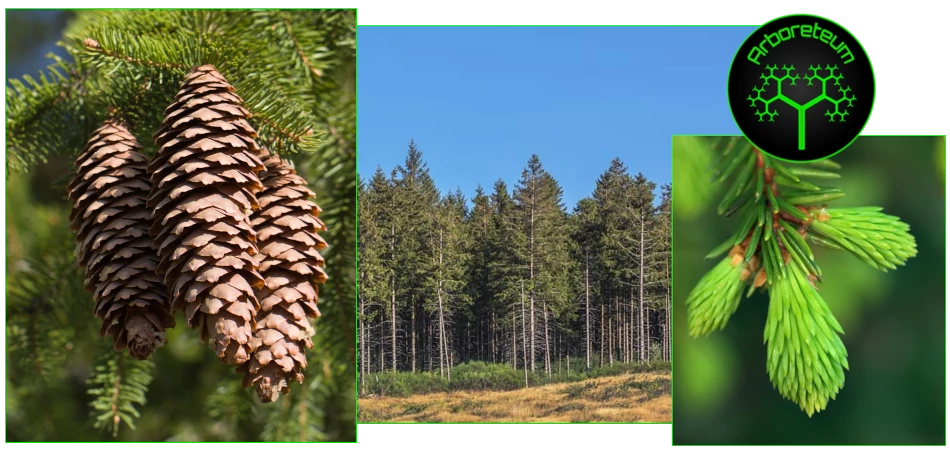
Oak (Quercus robur and Quercus petraea)
Quercus robur, commonly known as the "English oak" or "pedunculate oak". It is native to large parts of Europe and is recognized for its robust stature, longevity, and ecological importance.
Quercus petraea, commonly known as the sessile oak or durmast oak, is a species of oak tree native to Europe and parts of Asia. Quercus robur and Quercus petraea are deciduous trees belonging to the beech family (Fagaceae). They are similar and often confused.
The fruit of the oak tree, the acorns is the main difference between the oaks. Quercus robur are known for acorns on relatively long stalks (pedunculated); while Quercus petraea acorns have no stalk, they sit directly on the branch (sessile). Acorns are a crucial food source for many animals, including squirrels and birds. The oak also serves as a habitat for various insects and fungi.
The oak can grow to heights of 20 to 40 meters (about 65 to 130 feet) and has a broad, spreading crown. The leaves are typically lobed, dark green, and can grow up to 20 centimeters (about 8 inches) long. Being a deciduous tree the leaves change to a yellow-brown color in autumn before falling.
The oak has a long history of cultural significance, often symbolizing strength and endurance. It is used in traditional crafts, furniture, timber production, and for noteably for making barrels.
Oak trees, especially the English oak (Quercus robur), are threatened by oak decline, a complex issue involving pests, diseases, and climate change. Particularly oak is vulnerable to oak processionary moth outbreaks, which can weaken trees and make them more susceptible to diseases.
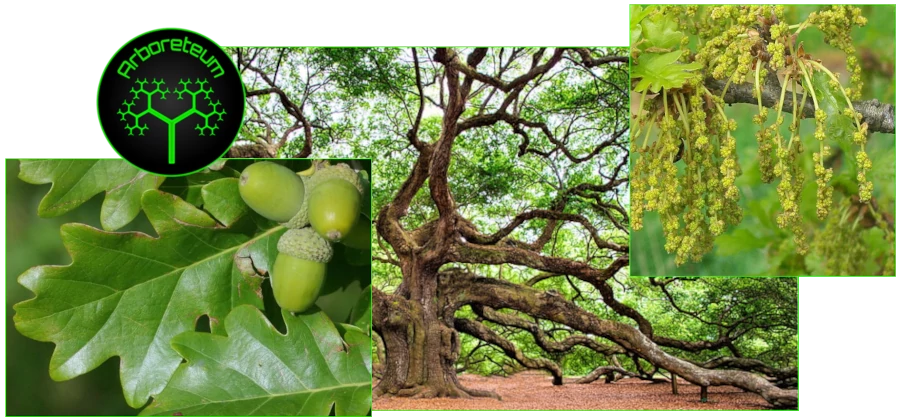
Scots Pine (Pinus sylvestris)
Pinus sylvestris, commonly known as "Scots pine", is a species of tree in the family Pinaceae. It is native to Europe and Asia and is widely distributed across northern parts of these continents. Scots pine can grow to heights of 35 to 40 meters (about 115 to 130 feet) and can live for several hundred years. The tree has a straight trunk with reddish-brown bark that is scaly and fissured. The needles are long, slender, and occur in pairs, typically measuring 4 to 8 inches in length.
Scots pine is valued for its timber, which is used in construction, furniture making, and paper production. Its wood is known for being strong and durable. As a result it is a major species in commercial forestry. It is often used in reforestation and afforestation projects due to its adaptability. The tree provides habitat for various wildlife species and contributes to biodiversity.
Scots pine thrives in a variety of soils, including sandy and acidic soils, and is adaptable to different climatic conditions. However, Scots pine, particularly in Scandinavia and the UK, have become increasingly vulnerable to pests such as the pine weevil and the mountain pine beetle. Fungal diseases like pine wood nematode are increasing with warmer and wetter climate conditions.
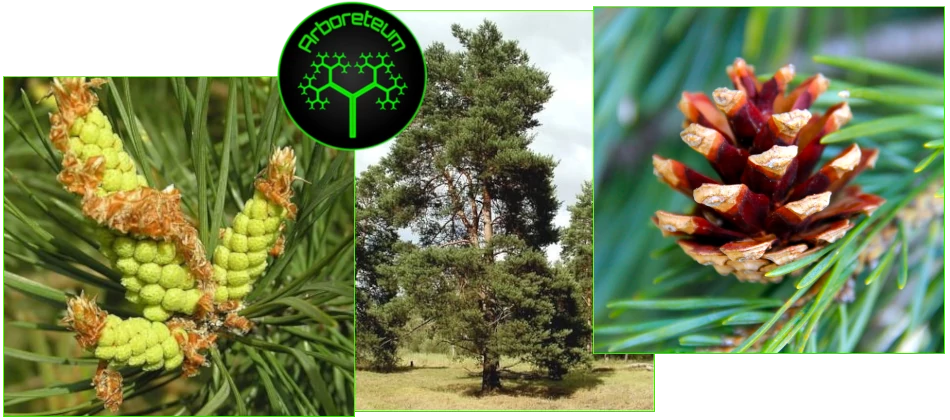
Silver Fir (Abies alba)
Abies alba, commonly known as the "European silver fir" or simply "silver fir", is a species of fir tree native to the mountains of Europe, particularly in the Alps and the Carpathians. It is a member of the coniferous Pinaceae family.
The European silver fir typically grows to heights of 30 to 50 meters (98 to 164 feet) and has a conical shape with a straight trunk. Its bark is smooth and grayish, becoming fissured with age.
The leaves are needle-like, flat, and arranged in a spiral around the branch. The cones are cylindrical, usually around 10 to 20 cm long, found upright on the branches. They release their seeds in autumn.
Abies alba thrives in mountainous regions, preferring well-drained soils and partial shade. It is often found in mixed forests and can grow in a variety of climates.
The wood of Abies alba is valued in construction and for making furniture, as it is lightweight and has good workability. The tree is used in reforestation and commercial forestry. Silver fir forests provide habitat for various wildlife species and contributes to the ecosystem's biodiversity.
The silver fir is under threat from the spread of pests such as the bark beetle, and diseases like root rot. It’s also sensitive to changes in temperature and precipitation patterns, which makes it vulnerable in regions where climate change is most severe.
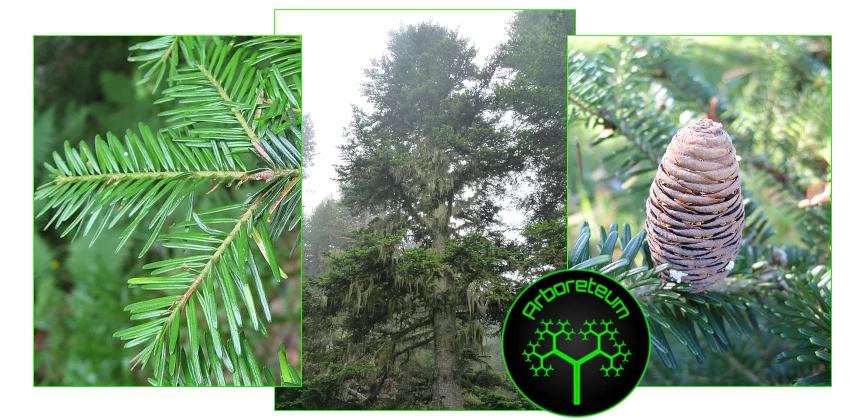
Sweet Chestnut (Castanea sativa)
Castanea sativa, commonly known as the "European chestnut" or "sweet chestnut", is a species of tree belonging to the beech family (Fagaceae). It is native to the Mediterranean region and parts of Asia but has been widely cultivated in many temperate regions around the world.
The European chestnut typically grows to a height of 20 to 35 meters (approximately 66 to 115 feet) and can have a broad, rounded crown. It has a long lifespan and can live for several centuries. The leaves are long and lanceolate, with serrated margins, and are typically dark green in color. The tree produces large, spiky burrs that contain one to three edible nuts per burr. The nuts have a sweet flavor and are used in a variety of culinary dishes, particularly in traditional European cuisine. The nuts can be roasted, boiled, or used as flour after being ground. They are popular in desserts, stuffing, and as a side dish. Chestnut purée is also a common ingredient in confectionery.
Castanea sativa trees can support a range of wildlife, and their nuts are an important food source for various animals. The species is grown not just for its nuts but also for its timber, which is valued for its durability and resistance to decay. European chestnut wood is often used in furniture, fencing, and construction.
Sweet chestnut is at risk from the invasive fungus Cryphonectaria parasitica, which causes chestnut blight. This fungus has been devastating chestnut populations in parts of Europe and Northern America.
